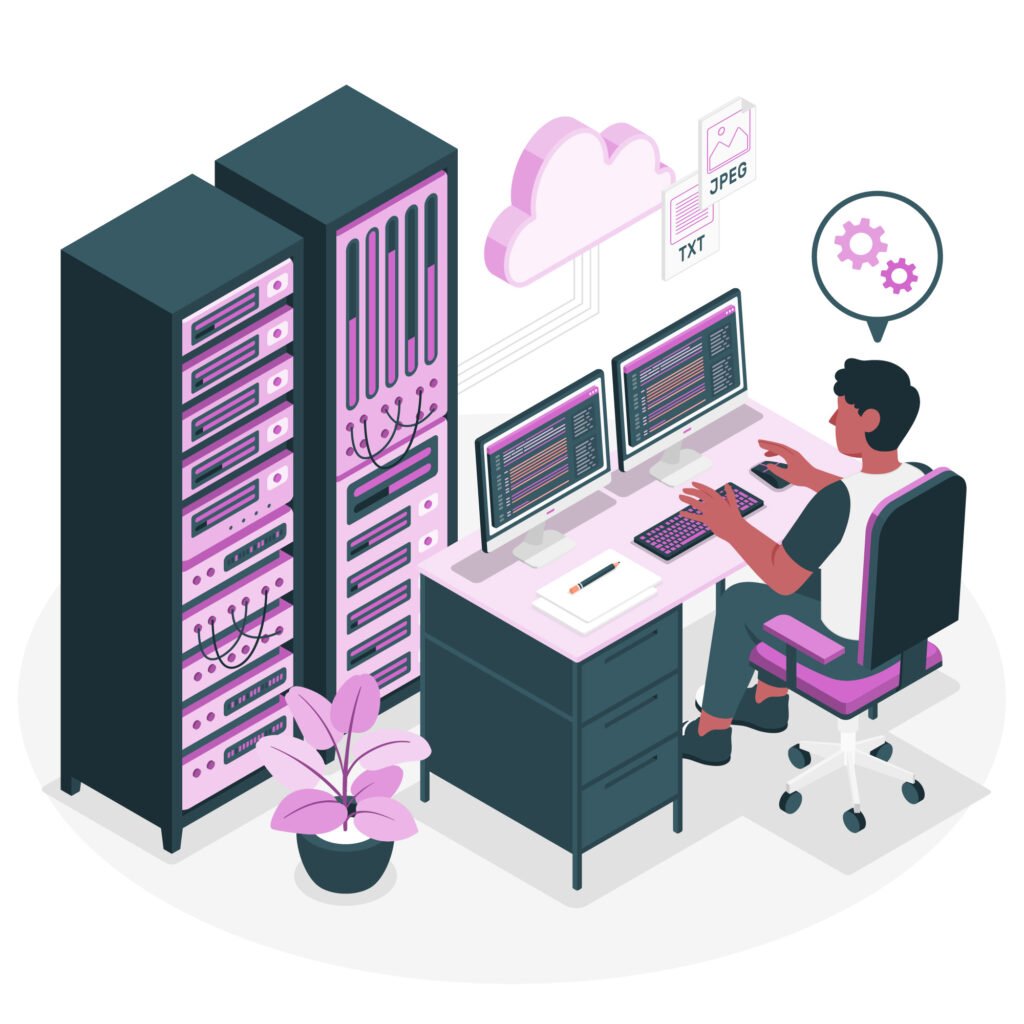If you’re new to building a website, choosing the right web hosting plan can feel overwhelming. Hosting providers often throw around technical terms like RAM, bandwidth, CPU, storage, and uptime guarantees—but what do these actually mean? And more importantly, how do they affect your website?
In this guide by DCX (Dev Cyber Nexus), we’ll break down each of these resources in simple terms, helping you make smarter decisions when choosing a hosting plan for your business, blog, or online store.
🧠 What Is Web Hosting, Really?
At its core, web hosting is a service that allows you to publish your website on the internet. Your hosting provider gives you space on a server (a powerful computer), where your website’s files, databases, and content are stored.
Just like renting a shop in the real world, hosting is about renting space and computing power on the web.
💾 1. Storage (Disk Space)
What it means:
Storage (or disk space) is the amount of data you can store on your hosting account. This includes everything from:
- Web pages
- Images & videos
- Databases
- Themes & plugins
- Emails (if your host offers email service)
Example:
A small 5-page website with basic images might only use 200–500 MB. But a blog with hundreds of posts, or an e-commerce site with product images and customer data, may require several GBs.
What to look for:
- For personal or startup sites: 1–5 GB is enough
- For growing businesses: 10–20 GB is ideal
- For media-heavy or large sites: 50 GB+ or scalable options
⚙️ 2. RAM (Random Access Memory)
What it means:
RAM temporarily stores data that your server needs to access quickly while your website is running. It’s crucial for handling dynamic requests like:
- Loading your site
- Processing form submissions
- Managing database queries
- Running plugins and scripts
Think of RAM as your site’s short-term memory.
If your site gets sudden traffic or runs multiple processes (like WooCommerce + page builders + security scans), low RAM can cause crashes or slow performance.
What to look for:
- Basic websites: 512MB–1GB RAM
- Small businesses: 2GB RAM
- Heavier sites (eCommerce, LMS, etc.): 4GB RAM or more
🔁 3. Bandwidth
What it means:
Bandwidth is the amount of data transferred from your server to your users over a given time—usually measured monthly.
Every time someone visits your website, downloads a file, or views an image, they use up some of your bandwidth.
Example:
If your homepage is 1 MB in size and 1,000 people visit in a month, that’s 1,000 MB (or ~1 GB) of bandwidth used—just from that one page.
What to look for:
- Low-traffic sites: 5–10 GB/month
- Medium business or blogs: 50–100 GB/month
- High-traffic or media sites: 100 GB+/month or unmetered plans
Note: Some hosting providers offer “unlimited” bandwidth—but check the fine print. It often has fair usage limits.
🧮 4. CPU (Central Processing Unit)
What it means:
The CPU is the brain of your server. It processes every request your website gets—loading a page, processing orders, running scripts, etc.
More CPU power = better ability to handle:
- High traffic
- Multiple simultaneous visitors
- Complex processes (e.g., checkouts, searches, analytics)
What to look for:
- Shared hosting may offer 1 CPU core (sufficient for light websites)
- VPS or business hosting offers 2–4+ cores for better performance
- CPU usage is often limited in shared plans, so ask for clarity
⏱️ 5. Uptime Guarantee
What it means:
Uptime is the amount of time your website is online and accessible. Hosting providers often offer uptime guarantees like 99%, 99.9%, or even 99.99%.
Every .1% matters.
- 99% uptime = ~7 hours downtime/month
- 99.9% uptime = ~44 minutes downtime/month
- 99.99% uptime = ~5 minutes downtime/month
Why it matters:
- Downtime affects SEO
- Customers may leave
- Lost revenue during outages
What to look for:
- A minimum of 99.9% uptime guarantee
- Hosting with uptime monitoring and transparent reporting
- SLAs (Service Level Agreements) that offer compensation if uptime falls below guarantee
🤔 So, How Do You Choose the Right Hosting Plan?
If you’re new to web hosting, here’s what you should consider:
| Website Type | Recommended Specs |
|---|---|
| Basic Blog or Portfolio | 1 GB RAM, 5 GB Storage, 10 GB Bandwidth |
| Small Business Website | 2 GB RAM, 10–20 GB Storage, 50 GB Bandwidth |
| E-commerce Store | 4 GB+ RAM, 50 GB+ Storage, Unmetered Bandwidth, 2+ CPU cores |
| Agency or High-Traffic Site | VPS or cloud server, scalable RAM & CPU |
Still unsure? DCX offers free hosting consultation to help you choose the right plan based on your goals, traffic, and website type.
🔐 DCX’s Hosting & Consultation Services
At Dev Cyber Nexus (DCX), we don’t just build websites—we help you choose the best foundation for your site’s growth and performance.
Here’s what you get with DCX hosting guidance:
- Honest breakdown of what you actually need
- Help choosing between shared, cloud, or VPS hosting
- Support in setting up your host, DNS, SSL, and backups
- Security-first configurations to protect your data from day one
Need managed hosting or full maintenance support? We’ve got you covered with affordable, all-in-one solutions.
🧩 Final Thoughts
Understanding hosting resources isn’t just for techies. As a website owner, knowing how RAM, bandwidth, storage, CPU, and uptime affect your site’s health will help you make informed choices and avoid unnecessary issues.
Choosing the wrong hosting can slow you down, frustrate your users, and even hurt your search rankings.
Let DCX help you get it right from the start.
Contact us today or schedule a consultation to make sure your hosting works as hard as your website does.




